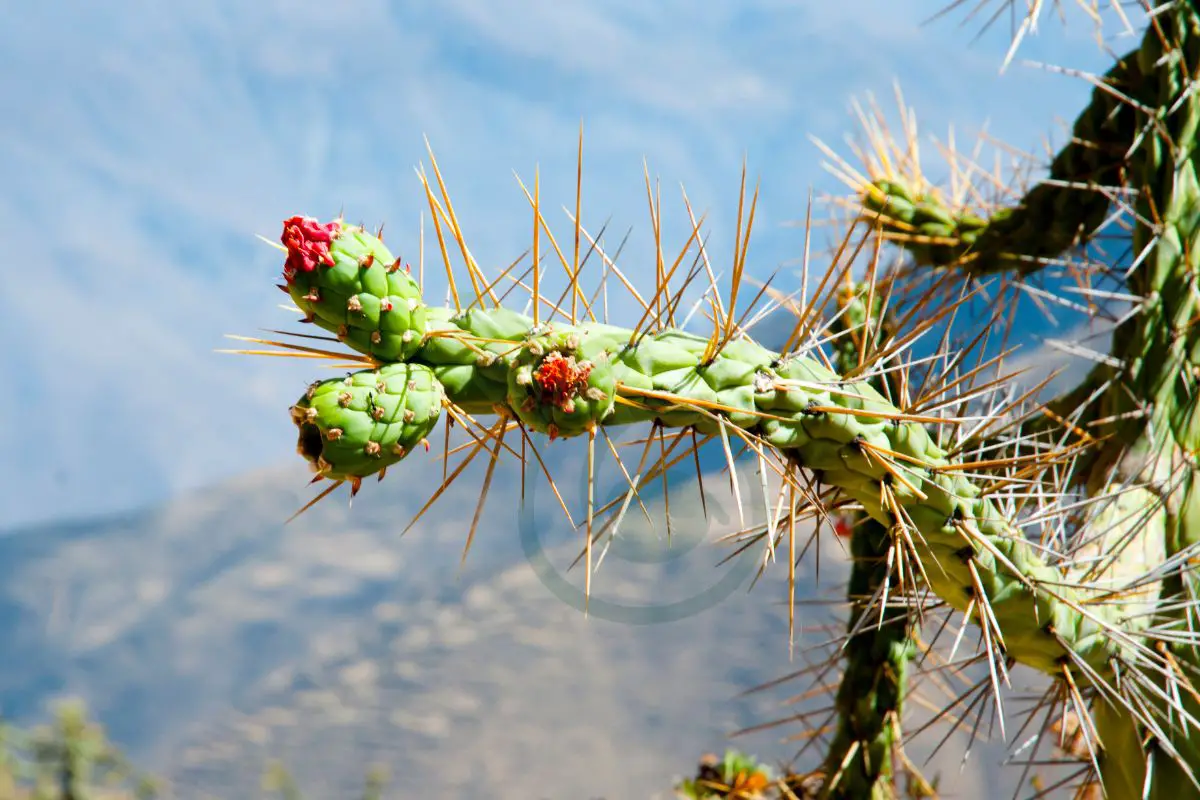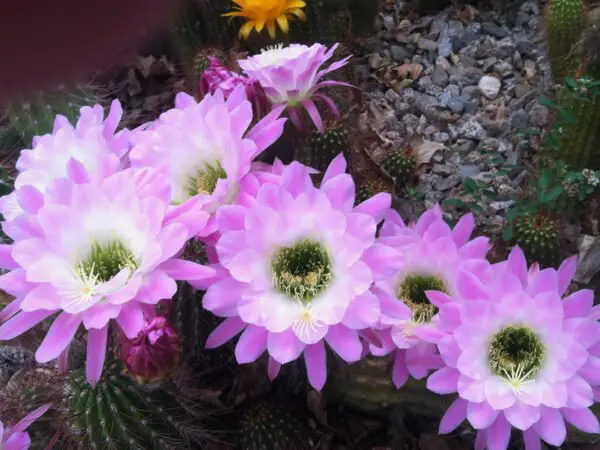Did you know that overwatering is one of the most common reasons for the demise of San Pedro cacti? Finding the right watering schedule for these unique plants can be a game-changer in their growth and overall health. Understanding how often to water your San Pedro cactus, the plant doctor, is crucial to ensuring its thriving condition.
San Pedro cacti are resilient, yet they have specific needs. We'll explore the impact of climate, soil type, pot size, and season on determining an optimal watering routine. By grasping these key elements, you can equip yourself with the knowledge needed to cultivate robust and flourishing San Pedro cacti in your own home or garden.
Key Takeaways
- Watering Frequency: Adjust the watering schedule based on the specific needs of your San Pedro cactus, considering factors such as season, temperature, and humidity.
- Proper Techniques: Use a well-draining soil mix and water thoroughly, allowing excess water to drain out completely to prevent root rot.
- Soil Preferences: Choose a cactus-specific or fast-draining soil mix to ensure proper drainage and prevent waterlogging.
- Light and Temperature: Place the cactus in a sunny location and maintain temperatures between 65-85°F (18-29°C) for optimal growth.
- Fertilization: Apply a balanced, water-soluble fertilizer during the growing season to support healthy growth and blooming.
- Pest and Disease Management: Regularly inspect the cactus for pests and diseases, and take prompt action to address any issues.
Watering Guidelines
Soil Requirements
San Pedro cacti have specific soil requirements that dictate their watering needs. Adjust the frequency of watering based on the season and growth phase of the plant. During warmer months or active growing periods, such as spring and summer, you may need to water more frequently. In contrast, reduce watering during fall and winter when the plant is dormant. Utilize the "soak and dry" method by thoroughly saturating the soil with water and allowing it to completely dry out before rewatering. This approach mimics their natural habitat where they experience sporadic rainfall. Overwatering should be avoided at all costs to prevent root rot, a common issue that can be fatal to San Pedro cacti.
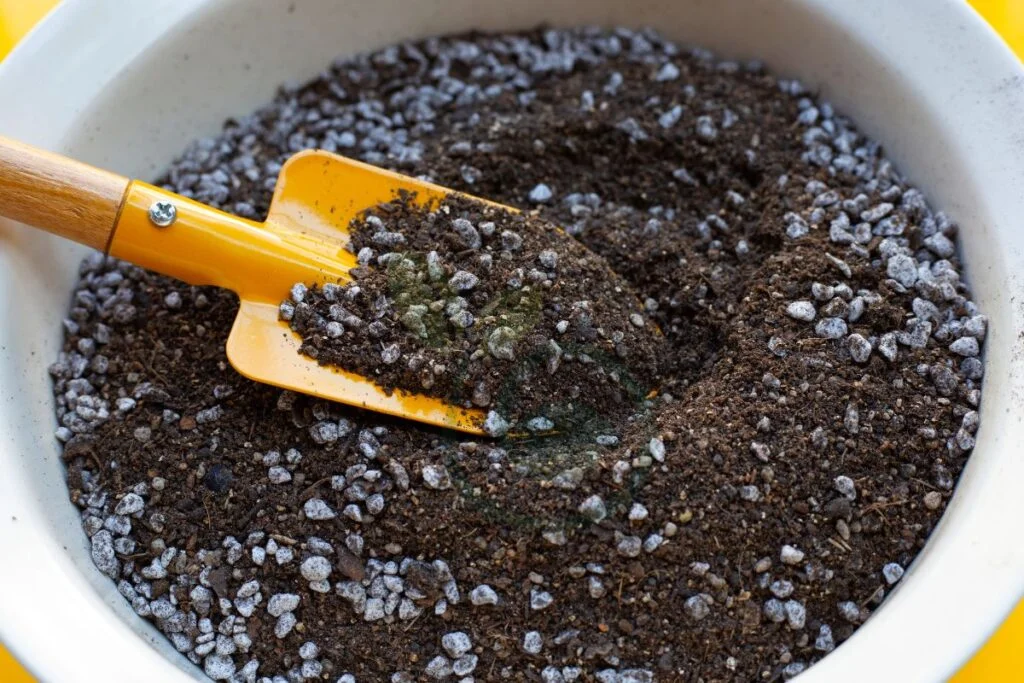
When considering soil composition, opt for well-draining soil mixtures containing sand or perlite to ensure excess moisture doesn't accumulate around the roots. Consider using a cactus-specific potting mix designed to provide adequate drainage while retaining some level of moisture essential for healthy growth. Verify that the soil pH remains slightly acidic, typically within a range of 6-7.
Light Exposure
The amount of light exposure directly influences how often you should water your San Pedro cactus. Ensure that your plant is placed in an area receiving ample sunlight for at least six hours daily, especially during its active growing period in spring and summer. However, shield it from intense midday sun during hot summers as excessive heat can lead to dehydration despite regular watering.
Choosing an appropriate potting medium also plays a crucial role in maintaining proper light exposure for your San Pedro cactus since it affects how quickly the soil dries out between waterings.
Consider utilizing artificial grow lights if indoor cultivation is necessary due to insufficient natural light sources or unfavorable environmental conditions such as long periods of overcast weather.
Temperature Considerations
Temperature considerations are vital when determining how frequently you should water your San Pedro cactus.
Understanding Watering Frequency
Seasonal Variations
San Pedro cacti are sensitive to temperature changes, so it's crucial to keep them in temperatures above 50°F (10°C). During colder months, protecting the cactus from frost and freezing temperatures is essential. If you live in a region with harsh winters, consider providing warmth or moving the cactus indoors.
When adjusting watering frequency for seasonal changes, pay attention to soil moisture levels and light exposure. Monitor temperature fluctuations throughout the year as they directly impact how often you should water your San Pedro cactus. For example, during summer when it's hotter and drier, you may need to water more frequently compared to cooler months.
Soil Moisture Levels
To determine if your San Pedro cactus needs watering, check the soil moisture by inserting a finger into the soil. If it feels dry several inches below the surface, then it's time to water. Allow the soil to completely dry out between each watering session. This approach prevents overwatering and helps mimic their natural habitat where rainfall is sporadic.
During periods of cooler weather or reduced sunlight exposure due to seasonal changes, adjust your watering routine accordingly. In colder climates where winter brings lower temperatures and reduced sunlight hours, consider moving your San Pedro cactus indoors temporarily until warmer conditions return.
Cactus Size and Pot
The size of your San Pedro cactus also influences its watering needs. Larger plants generally require more frequent watering than smaller ones due to their increased demand for water. Take note of how much space there is for excess water at the bottom of the pot; pots with drainage holes allow excess water to escape rather than causing prolonged periods of soggy soil that can lead to root rot.
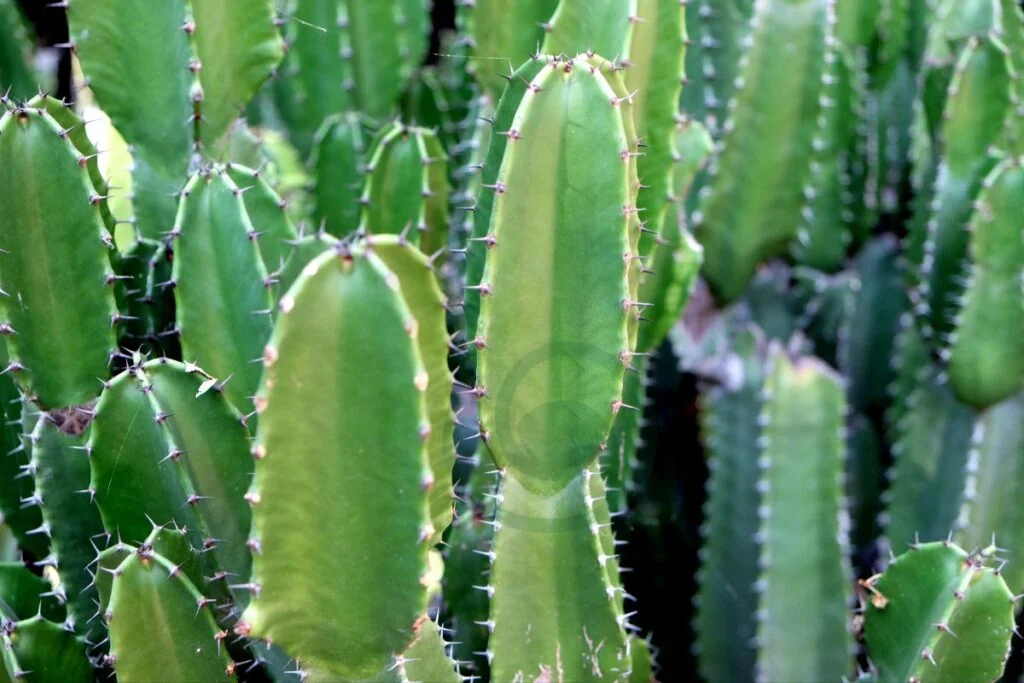
Factors Affecting Watering Schedule
Environmental Conditions
San Pedro cacti thrive in well-drained soil, so it's crucial to select a pot that allows excess water to escape. As the plant grows, repotting is essential to provide ample space for root development and prevent waterlogging. Terracotta pots are an excellent choice due to their breathability.
When considering indoor cultivation, protecting the San Pedro cactus from strong winds is vital, particularly in arid regions where excessive wind can lead to dehydration. Furthermore, shielding the plant from excessive humidity helps prevent fungal issues. It's also important to monitor air circulation around the plant to ensure proper ventilation.
In contrast, when cultivating San Pedro cacti outdoors, it's imperative to place them in well-drained soil under full sun conditions for optimal growth. This ensures that excess moisture doesn't accumulate around the roots and cause rot.
Growth Phases
Adjusting watering frequency based on whether the San Pedro cactus is grown indoors or outdoors is crucial for its overall health. When placed indoors, ensuring adequate light exposure through windows or grow lights promotes healthy growth and reduces watering needs.
Conversely, when cultivated outdoors, monitoring environmental conditions becomes paramount. The key lies in providing sufficient drainage and avoiding overwatering during rainy seasons.
Proper Watering Techniques
Water Quantity
San Pedro cacti have different water needs throughout the year. During active growth phases, adjust your watering schedule to accommodate their increased thirst. Keep an eye on their growth patterns for any signs of stress or overwatering, such as yellowing or wilting. In winter months, allow the cactus to go through a period of dormancy by reducing the frequency and amount of water it receives.
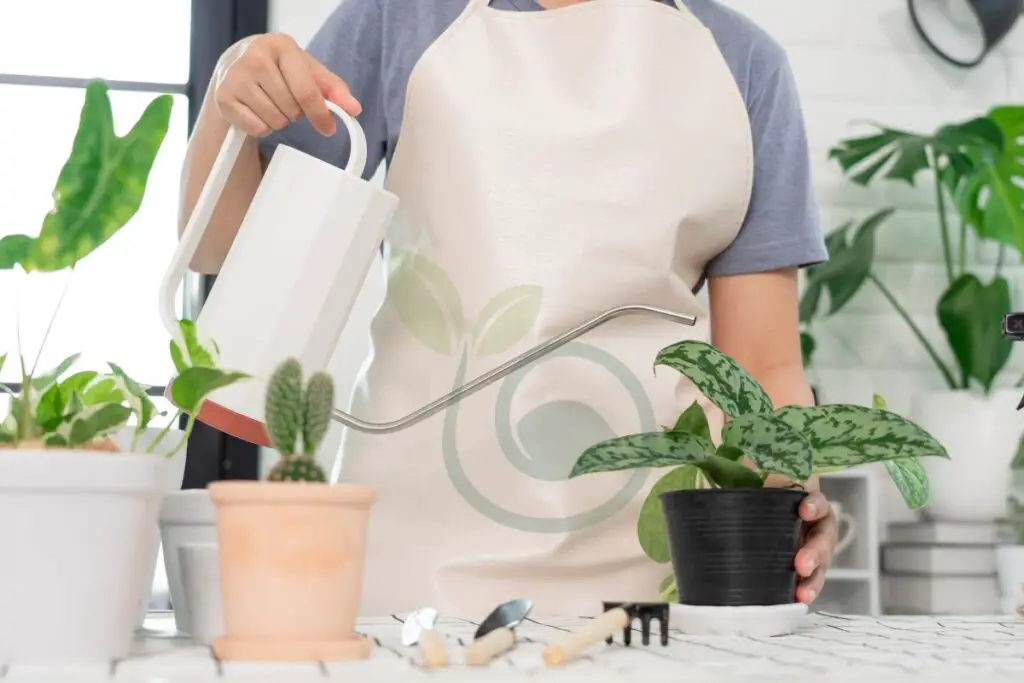
When watering your San Pedro cactus, ensure that you do so thoroughly until excess water drains from the bottom of the pot. This ensures that all parts of the root system receive adequate moisture without leaving behind stagnant water that can lead to root rot. The quantity of water should be adjusted based on the size of the pot and environmental conditions such as temperature and humidity. Avoid frequent, shallow waterings as they can encourage shallow root growth and make your plant more susceptible to drying out.
Water Quality
Using room temperature filtered water when possible is beneficial for San Pedro cacti. Filtered water helps reduce harmful chemicals and impurities that may be present in tap water, which could potentially harm your plants over time. It's important to avoid softened or hard water due to their high mineral content, which can accumulate in the soil and negatively impact plant health.
Consider rainwater or distilled water as alternatives if filtered tap water isn't available. Rainwater is naturally free from harsh chemicals found in some municipal waters while distilled water has been purified through evaporation and condensation processes, making it free from contaminants often found in regular tap or well waters.
Drainage Importance
Proper drainage is crucial for maintaining healthy San Pedro cacti since they are susceptible to rot if left sitting in standing moisture for too long after being irrigated.
San Pedro Cactus Soil Preferences
Soil Composition
San Pedro cacti thrive in well-draining soil, so it's crucial to ensure that the pots have drainage holes. These holes prevent water from accumulating at the bottom of the pot, which can lead to root rot. To further promote good drainage, consider elevating the pots on feet or using saucers to allow excess water to escape. It's also essential to address any drainage issues promptly, such as removing blockages from the drainage holes.
Choosing a well-draining mix with good aeration properties is key. This type of soil prevents waterlogging and ensures that excess moisture doesn't linger around the roots. Incorporating organic matter sparingly is advisable since an excessive amount can retain moisture and lead to root rot. Consider adding coarse sand or perlite into the mix as they help improve drainage, preventing water from pooling around the roots.
Repotting Tips
Repotting your San Pedro cactus requires careful consideration of its soil preferences. When selecting a new potting mix for repotting, opt for one with excellent drainage properties similar to what was recommended earlier. Incorporating organic matter should be done sparingly during repotting too; this will help avoid retaining excess moisture in the new soil.
If you're looking for ways to enhance aeration and drainage when repotting your San Pedro cactus, consider adding coarse sand or perlite into the fresh potting mix before transferring your plant into its new home.
Light and Temperature for San Pedro Cactus
Ideal Light Conditions
San Pedro cacti thrive in bright, indirect sunlight. This means placing them near a sunny window or providing them with plenty of natural light outdoors. When considering repotting, it's essential to refresh the soil every 2–3 years to ensure the plant has enough nutrients and space to grow. During this process, handle the roots gently to minimize stress on the plant. If you plan on repotting during cooler months, consider waiting until warmer weather arrives as this will promote quicker root establishment.
It's crucial to rotate your San Pedro cactus periodically so that all sides receive even light exposure. By doing so, you can prevent the plant from leaning towards one direction due to uneven lighting. Protecting your cactus from scorching midday sun during peak summer is vital for its well-being.
Temperature Ranges
To ensure optimal growth for your San Pedro cactus, aim for a temperature range that mimics its native environment. This typically involves maintaining temperatures between 65°F and 90°F (18°C - 32°C). It's important to note that extreme fluctuations in temperature can be harmful to these plants.
During winter months when temperatures drop significantly, it’s advisable to bring outdoor-grown San Pedro cacti indoors or provide adequate protection against frost. On the other hand, if you live in an area with scorching summers, consider providing some shade during peak hours of intense sunlight.
Fertilizing San Pedro Cactus
Fertilizer Types
San Pedro cacti thrive in temperatures ranging from 65–90°F (18–32°C) during their active growth period. When transitioning the cactus outdoors, it's crucial to acclimate it gradually to temperature changes and shield it from sudden temperature extremes.
During active growth, consider using a balanced, low-nitrogen fertilizer specially formulated for cacti. This type of fertilizer provides essential nutrients without promoting excessive foliage growth. Slow-release fertilizers are also beneficial as they offer convenience and ensure consistent feeding over an extended period.
Feeding Schedule
To maintain optimal health, apply fertilizer sparingly during the growing season. Over-fertilization can lead to adverse effects on the San Pedro cactus, such as root damage and poor overall growth. It's important to follow the recommended dosage provided on the fertilizer packaging.
A feeding schedule of once every two weeks or monthly is generally suitable for these desert plants during their active growing phase. However, always check the specific instructions on your chosen fertilizer product for precise guidance tailored to your San Pedro cactus's needs.
When considering slow-release fertilizers, keep in mind that they slowly release nutrients into the soil over an extended period. This gradual process ensures that your San Pedro cactus receives a steady supply of essential nutrients without overwhelming it with a sudden influx of fertilizers.
Propagation of San Pedro Cactus
Cutting Methods
It's essential to understand the cutting methods. During the active growth periods, which usually occur in spring and summer, you should feed the cactus every 4–6 weeks. However, during its dormancy in winter months, it's crucial to withhold fertilizer entirely. This allows the plant to rest and prepare for its next growing season.
During active growth periods:
- Feed every 4–6 weeks
- Withhold fertilizer during dormancy in winter months
Furthermore, when fertilizing your San Pedro cactus during its active growth period, remember to dilute the fertilizer strength by half. Overfeeding can be harmful as it may cause salt buildup in the soil or even burn the roots of your cactus.
Rooting Process
The process of propagating a San Pedro cactus also involves understanding how to properly handle and care for cuttings. When cutting segments for propagation purposes, always use sterile tools. This helps prevent any potential infections that could harm your new cuttings.
Rooting process:
- Use sterile tools when cutting segments for propagation
After making clean cuts on your selected segments from a healthy plant, allow them time to callus over before planting them into well-draining soil. 2. Allow cuttings to callus before planting in well-draining soil
Once planted with proper drainage provided by well-draining soil mixtures (such as those containing perlite or sand), monitor these newly planted cuttings carefully. 3. Monitor new growth after planting cuttings
Managing Pests and Diseases
Common Pests
San Pedro cacti are susceptible to pests, so it's crucial to ensure proper care during the propagation process. Before placing cuttings in soil, ensure they have callused properly. This helps prevent rot and fungal issues that can arise from excess moisture.
When rooting the cuttings, provide warmth and indirect light to encourage healthy growth. Mist sparingly around the cuttings to maintain humidity without creating a damp environment that attracts pests.
Disease Prevention
To prevent common pests such as spider mites, scale insects, or mealybugs from infesting your San Pedro cactus, regular inspection is key. Keep an eye out for any signs of infestation under leaves and along stems.
If you notice any pest activity, it's essential to treat the infestation promptly. Consider using neem oil or insecticidal soap as organic remedies to keep these pesky critters at bay.
Inspecting regularly will help catch any potential issues early on before they escalate into larger problems.
Troubleshooting San Pedro Cactus Issues
Signs of Overwatering
Overwatering can lead to fungal diseases in San Pedro cacti. To prevent this, avoid overhead watering and opt for a more direct method like using a watering can or drip system. It's crucial to quarantine new plants before introducing them to your existing collection. This helps prevent the spread of pests or diseases that may have come with the new plant. If you notice signs of overwatering such as yellowing, mushy stems, or wilting, promptly prune affected areas to stop the spread of disease.
Signs of Underwatering
Underwatering can also harm your San Pedro cactus. Look out for yellowing, mushy stems, or wilting due to overwatering - these are clear indicators that adjustments need to be made in your water schedule. Consistently monitor the moisture levels in the soil around your cactus and make sure they're appropriate for its needs. If you spot signs of overwatering such as shriveled and wrinkled skin on the cactus or extremely dry soil, consider increasing the frequency at which you water your plant.
Summary
You've now got the lowdown on watering your San Pedro cactus. Remember, the key is to strike the right balance – not too much water, not too little. Understanding your specific environment and the needs of your plant will guide you in creating the perfect watering schedule. Keep an eye on the soil moisture, adjust based on the season, and always prioritize well-draining soil for your cactus.
Now that you're equipped with the knowledge to keep your San Pedro cactus thriving, go ahead and put these tips into action. Observing how your plant responds to different watering frequencies will fine-tune your approach. And don't forget, a happy San Pedro cactus will reward you with its stunning beauty for years to come!
Frequently Asked Questions
How often should I water my San Pedro cactus?
San Pedro cacti prefer infrequent watering, especially during the winter months. A general rule is to water deeply but allow the soil to dry out completely between watering sessions. In summer, you may need to water every 2-3 weeks, while in winter, once a month may be sufficient.
What are the ideal soil preferences for San Pedro cactus?
A well-draining soil mix is crucial for San Pedro cacti as they are susceptible to root rot if their roots sit in soggy conditions. A blend of potting soil and coarse sand or perlite works well. Avoid heavy soils that retain moisture for extended periods.
How can I propagate my San Pedro cactus?
The most common method of propagating a San Pedro cactus is through cuttings. Allow the cutting to callus over for a few days before planting it in a well-draining potting mix. Keep the soil lightly moist and place it in bright, indirect light until new growth appears.
What are some common pests and diseases that affect San Pedro cacti?
Common pests include spider mites and mealybugs, which can be treated with insecticidal soap or neem oil. As for diseases, overwatering can lead to root rot, while inadequate airflow may cause fungal issues like stem rot. Proper care practices help prevent these problems.
How do I determine if my San Pedro cactus needs more or less light?
Observing your plant's behavior is key – if it starts stretching tall or leaning towards one direction, it likely needs more sunlight. If you notice sunburn spots on its skin or discoloration from too much direct light, consider providing partial shade during peak sunlight hours.
Image Source: Paid image from CANVA

